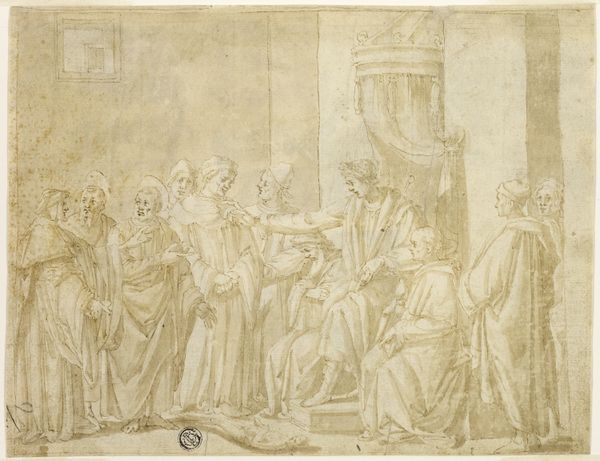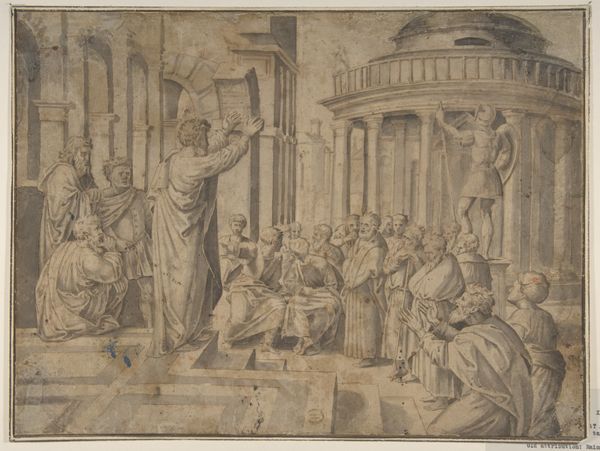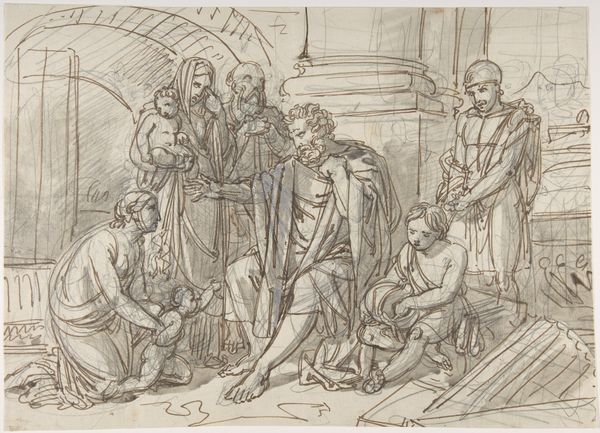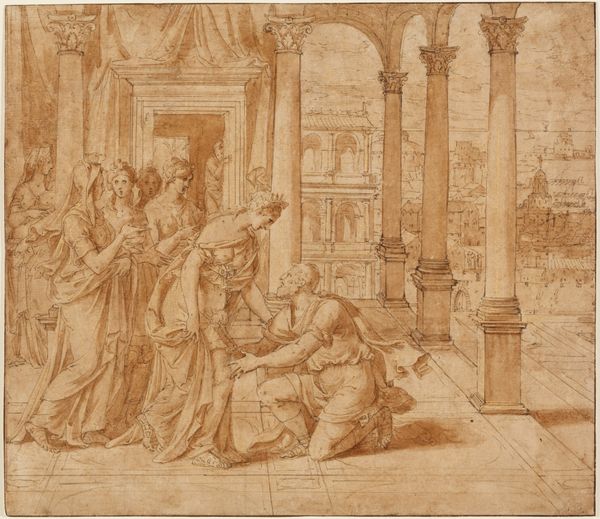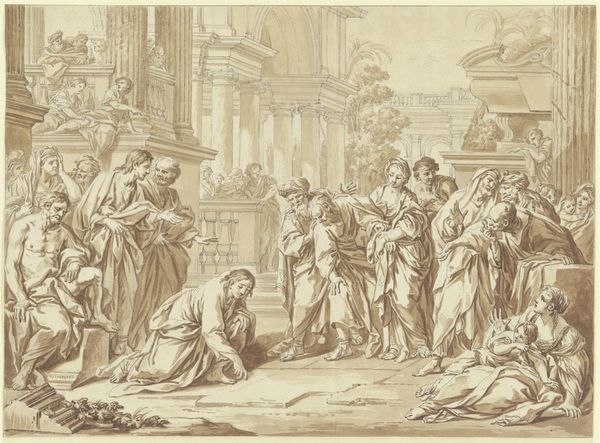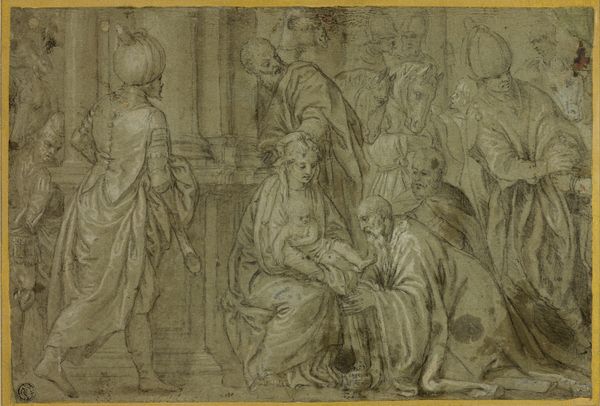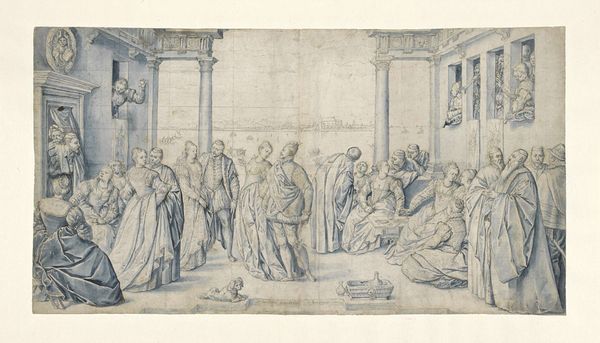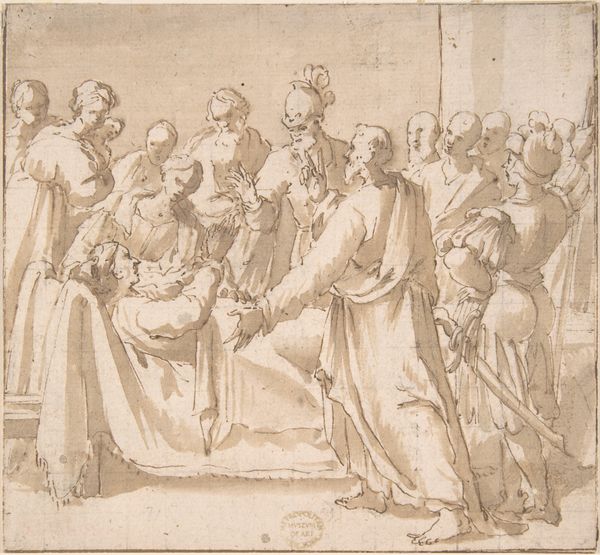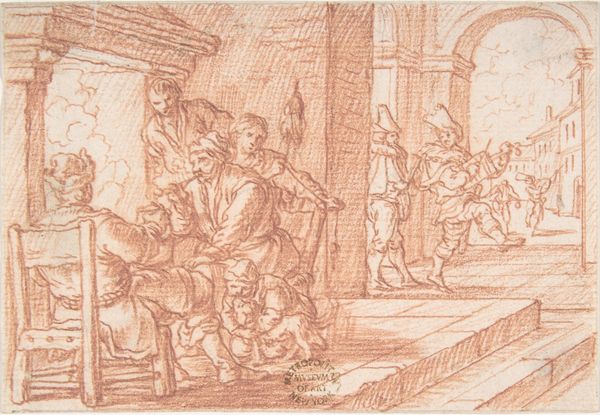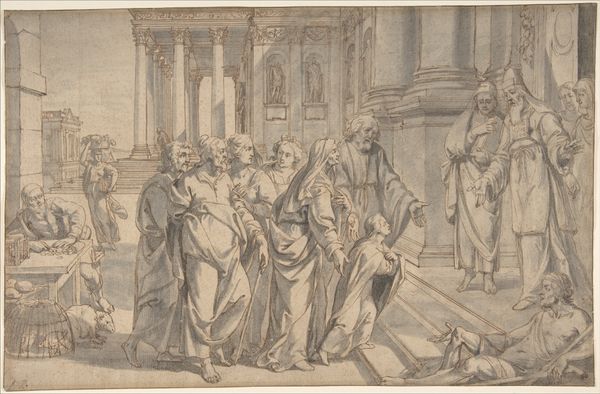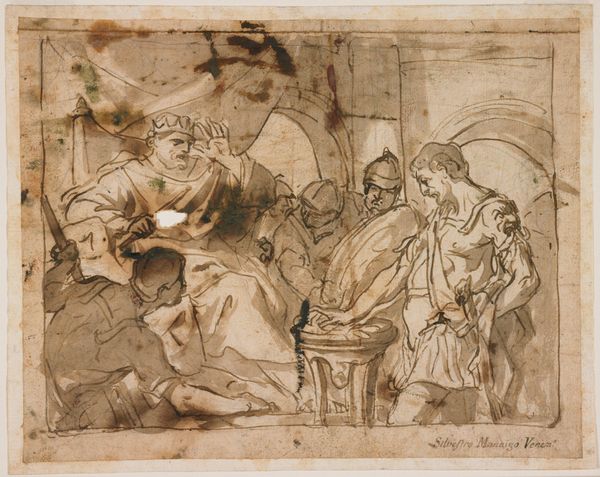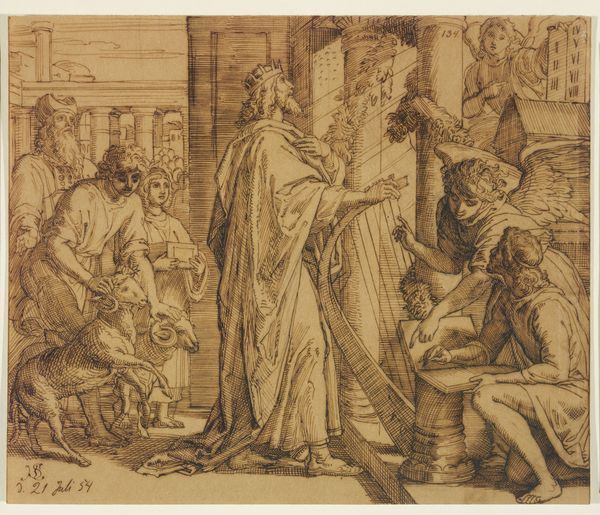
Thomas of Villanova, Archbishop of Valencia Distributing Alms to the Poor 1615 - 1625
0:00
0:00
drawing, print, paper, ink
#
drawing
#
narrative-art
#
baroque
# print
#
figuration
#
paper
#
ink
#
pencil drawing
#
group-portraits
#
genre-painting
#
history-painting
#
realism
Dimensions: 10-13/16 x 15-15/16 in. (27.5 x 40.5 cm)
Copyright: Public Domain
Curator: This work, dating from between 1615 and 1625, is by Pedro Orrente. Titled "Thomas of Villanova, Archbishop of Valencia Distributing Alms to the Poor", it’s currently housed at the Metropolitan Museum of Art. Made with ink on paper, it depicts its title rather directly. Editor: It's… compelling. Kind of monochromatic with these reddish browns, it brings to mind sepia photographs or old biblical sketches. The emotion is clear though. It definitely feels Baroque with the theatricality, even in a limited palette. Curator: Absolutely. We see clear examples of the Baroque emphasis on dramatic narratives. Orrente likely used readily available paper and ink. The material realities dictate, in part, the visual character of this depiction. Considering the socio-economic context, we can think about how distribution was perceived and administered at the time. How power and material aid were literally handed out. Editor: Right. There's something raw about the way he’s depicted the bodies. They are neither idealized nor eroticized, only... worn. Almost like the medium and technique directly mirrors the state of the poor: a humble drawing in a humble medium. There’s definitely beauty in that humbleness. Curator: Well, look at the robes and garb, as well. Clearly demarcating wealth and class distinctions via fabric and ornamentation – signifying privilege as a material reality. I’m most interested in the means by which Orrente depicted it, especially the technical process through the labor itself in reproducing this, it’s not only a picture of an activity of labor, but it is literally a manifestation of that principle as a manual practice of its production and function as a historical account. Editor: And you're reminded how this image, in and of itself, served its function by, let’s say, inspiring a kind of reflective sentiment for piety. Though a seemingly common theme, the way Orrente composes the narrative through these raw lines is thought-provoking. I keep noticing how everyone is actually *looking*– Curator: It illustrates a material exchange and the social relations materialized within the act of making it. Editor: Yeah… In that case, I feel a subtle call for greater material justice, even now.
Comments
No comments
Be the first to comment and join the conversation on the ultimate creative platform.
